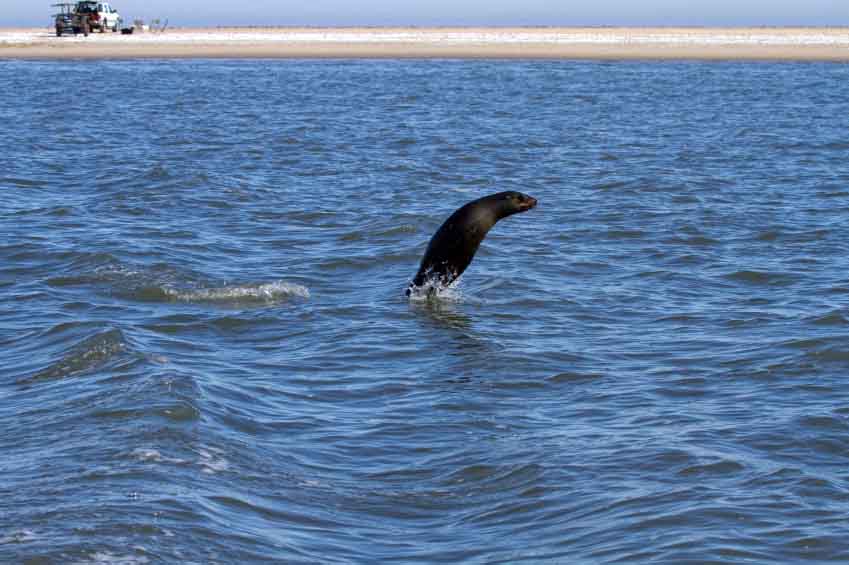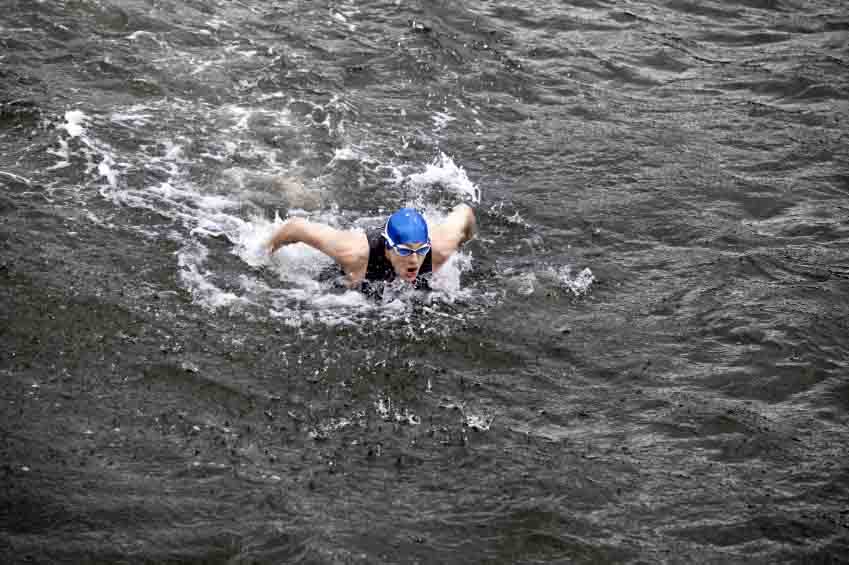Porpoising can be Understood
When a creature leaps in and out of the water, they are doing an act called porpoising. While it is highly ineffective as a swimming technique, elements of it are part of the butterfly stroke which is one of the most popular and effective swimming styles available.
Quite a few animals and ocean life actually swim using this wave like motion in the wild. They include auks, sea otters, murres, penguins and other seabirds. Of course, animals similar to the porpoise also use this technique such as bottlenose dolphins, whales and even orcas. There is a belief in the science community that some of these animals intentionally use this swimming technique as it can disorient and confuse both predators and prey.
Penguins
Some also speculate that certain animals will do it as a form of entertainment. Penguins for example have powerful flippers that allow them to swim, but they can do a porpoising leap that can take them 2 – 6 feet. While the angle is shallow, it does prove to be effective as it allows them to glide through the air in a short distance, without there being any injury involved in the process. Since most marine bodies are bullet shaped, they are able to better propel through the water. This is similar to the shape swimmers take in the water during many of the popular swimming styles such as the butterfly stroke.
 |
 |
Human Porpoising
Speaking of humans and going through the water, how do they use this horizontal wave like motion during swimming? If you have watched famous swimmers like Michael Phelps doing the butterfly stroke, then you’ve seen this technique used. Like a dolphin would in the water, the butterfly stroke has swimmers use their legs in a simultaneous whipping motion that propels them through the water.
This movement can then be continued as the individual pushes forward. The swimmer then raises themselves out of the water, similar to that of a dolphin and then goes underwater, glides and then leaps again. This movement allows the individual to quickly maneuver through the water and to achieve incredible amounts of speed. That is one of the reasons why so many swimmers use butterfly swimming in competitions.
Breathing and Movement
Breathing is the other important element that comes into play during this wave like motion. Every creature that uses this technique can inhale fresh air during the leaps and then hold their breath when they dive. This allows for longer distances to be swum without the need to pause and breathe and break the cycle. That makes it a very effective choice that one should consider in the pool in addition to large bodies of water.
As a natural swimmer, it is important that you take the time to study how the dolphin swims and then incorporate the movements and the swim techniques into your own swimming routine.
Today’s Daily Swimming Workout
Warm-Up: 500 with swim fins alternating streamline kicking and streamline freestyle
6 X 100 Individual Medley
12 X 25 alternating breaststroke and freestyle
Pull with hand paddles 500 alternating 25 breaststroke and freestyle with high elbow
6 X 100 as 25 butterfly and 75 backstroke
3 x 200 as 25 butterfly, 25 backstroke and 150 freestyle
8 X 25 alternating butterfly and freestyle
3 x 200 Individual Medley
Warm-down: 200 tai-chi style swimming choice
Total: 4100 meters
back to the top of porpoising page








